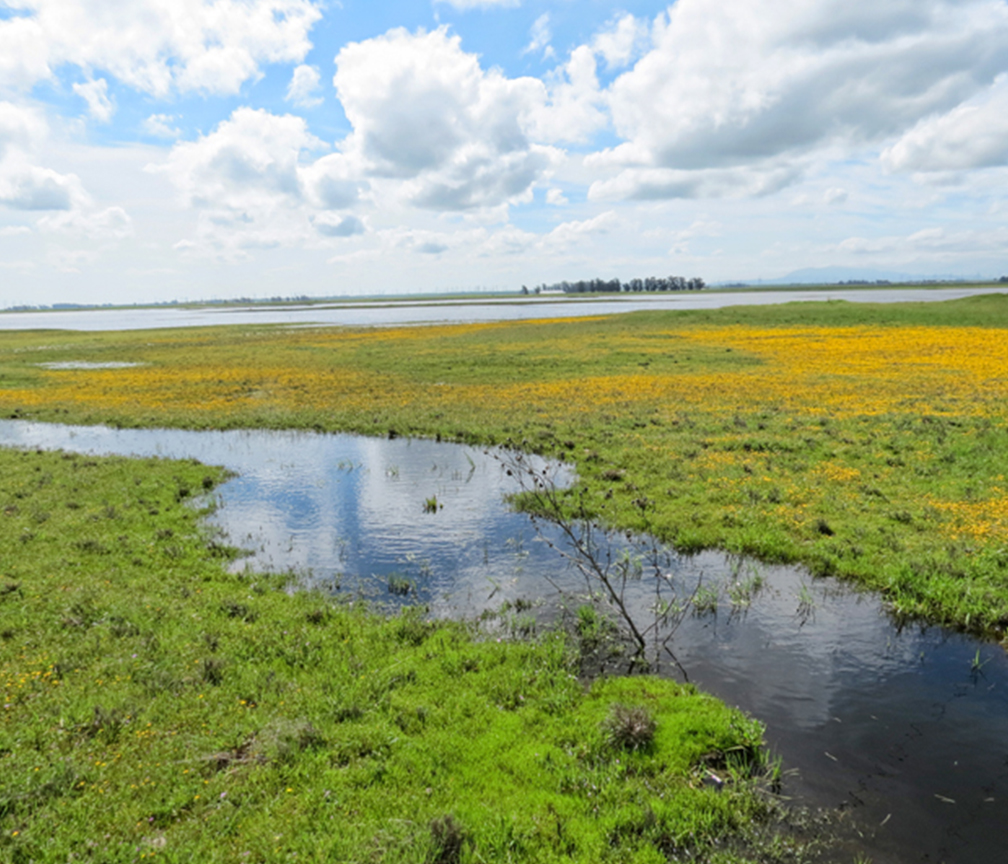Vernal Pools and Why We Care About Them
Each spring, wildflowers explode in colorful display across nearby fields and wetlands. Winter rains transform the prairie, dry and dormant the rest of the year, into a carpet of stunning colors watered by vernal pools, which sustain rare aquatic species. Vernal pools are temporary wetlands found in Mediterranean climates around the world, filling depressions in areas in which hardpan soil prevents rain from draining. The pools collect water in winter and spring and evaporate in summer. California’s wetlands support a unique diversity of flora and fauna.
Vernal Pool Conservation
Bunchgrass prairies and vernal pools once dominated 13 million acres of California’s Central Valley, supporting large grazing animals and enormous flocks of migratory birds. California Department of Fish and Wildlife estimates that, since Spanish explorers and subsequent European settlers’ arrival, 90 percent of the original vernal pool habitat has been destroyed by agricultural and urban development. These factors have also altered the land surrounding vernal pools, increasing erosion and runoff and adding harmful pesticides and fertilizers. Today, vernal pools are rare, and many native plant and animal species are endangered. Among the specially adapted aquatic life forms are crustaceans such as fairy and tadpole shrimp, amphibians, the California tiger salamander, and insects. Vernal pools also play a prominent role in wetland habitat along the Pacific Flyway.
Jepson Prairie Preserve
We are fortunate to live near Jepson Prairie Preserve, one of the few remaining vernal pool habitats and bunchgrass prairies in California, located 10 miles south of Dixon and east of Travis AFB. It was purchased by the Nature Conservancy in 1980 and transferred to Solano Land Trust in 1997, which has primary responsibility for its management. In 1987, the National Park Service designated the Dixon vernal pools a National Natural Landmark. A vernal pool larger than an acre is called a playa lake. The largest of these within the 1,566-acre preserve is 93-acre Olcott Lake. The preserve also shelters habitat for 400 species of plants, 15 of which are rare and endangered.
You can visit the preserve’s self-guided trail any day of the year, and Solano Land Trust sponsors docent-led tours from mid-March until May. The dates depend on rainfall and resulting flowers. Email info@solanolandtrust.org or call 707-709-9028 for details.
The photo was originally featured on the Solano Land Trust website.



